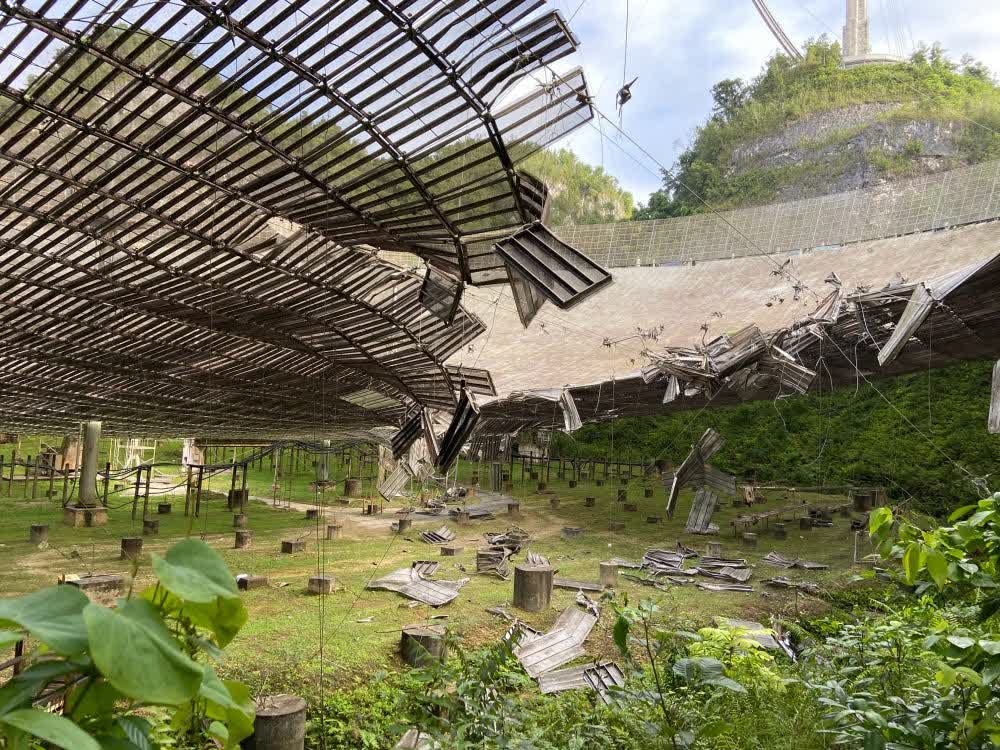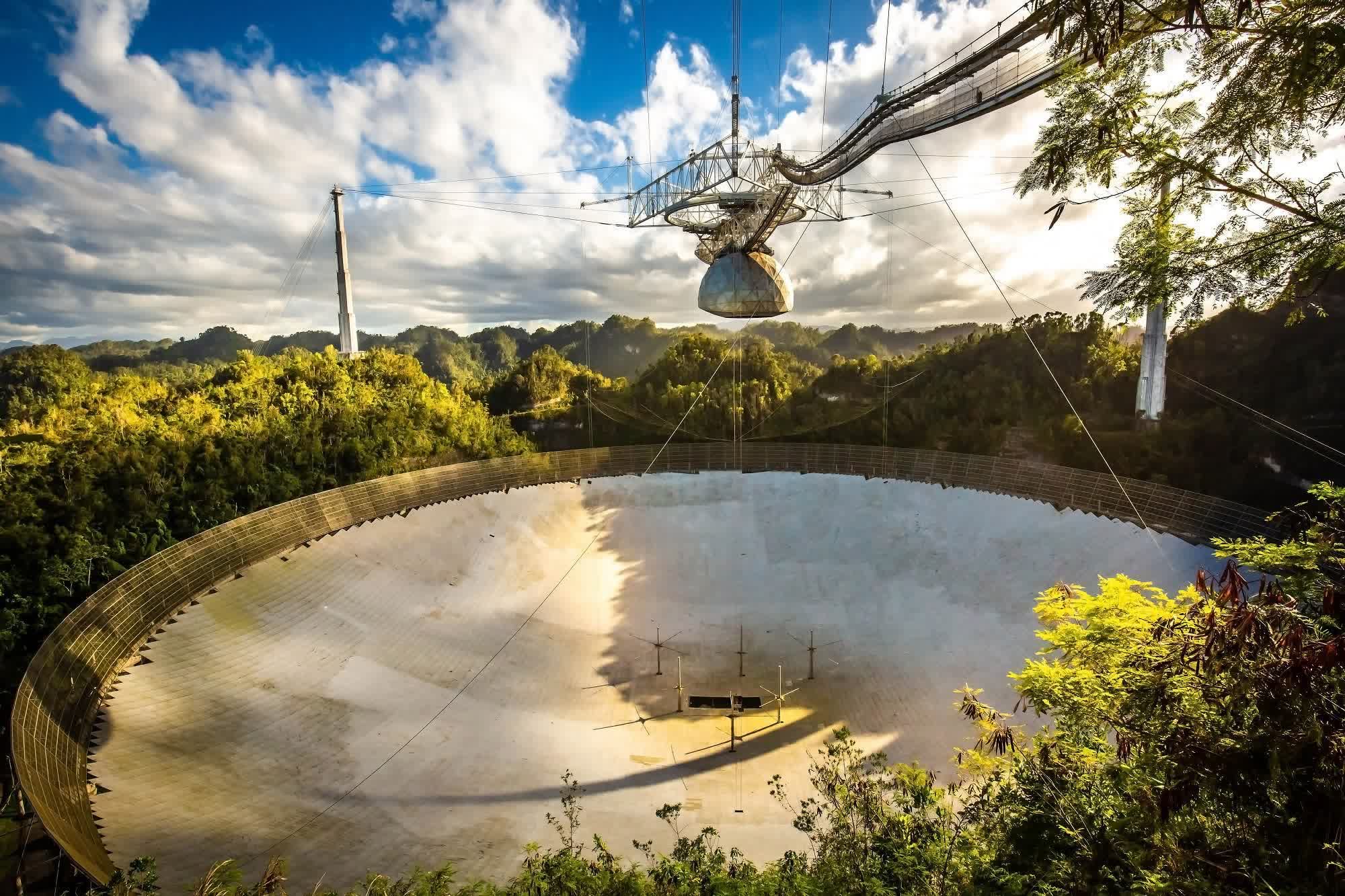In a nutshell: The Arecibo Observatory, the iconic US space telescope located in the Puerto Rican Jungle, is being decommissioned after 57 years of operation following two destructive cable breaks that have left it unable to be repaired safely.
Back in August, not long after Tropical Storm Isaias hit Puerto Rico, a 3-inch thick, auxiliary cable slipped from its socket, tearing a 100-foot hole in the 1000-foot reflector dish. Earlier this month, just before repairs were due to start, a 15,000-pound main cable broke from the same tower, hitting the dish and causing more damage to the panels below.
Even those unfamiliar with the telescope might remember it from the James Bond movie GoldenEye. The site was also used in Contact, Species, and a 1994 X-Files episode.

Both cables had been supporting the massive platform sitting 450 feet above the dish. If another cable fails, the 900-ton metal structure would come crashing into the disk, likely dragging the three support towers down. The cause of the initial cable break has not yet been established.
The US National Science Foundation (NSF) says that any attempts to repair the observatory would be too dangerous for those involved. "NSF has concluded that this recent damage to the 305m telescope cannot be addressed without risking the lives and safety of work crews and staff," said Sean Jones, assistant director of the mathematical and physical sciences directorate at NSF. "NSF has decided to begin the process of planning for a controlled decommissioning."
Even determining how long the observatory has left before it collapses is proving impossible. "Attempts at stabilization or testing the cables could result in accelerating the catastrophic failure," said Ralph Gaume, the director of the NSF's Division of Astronomical Sciences.
The observatory, operated by the University of Central Florida, Yang Enterprises and UMET under a five-year $20m agreement with NSF, has been used to search for extra-terrestrial life signs, investigate potentially dangerous near-earth asteroids, and analyze distant stars and planets.
Image credit: Photo Spirit
